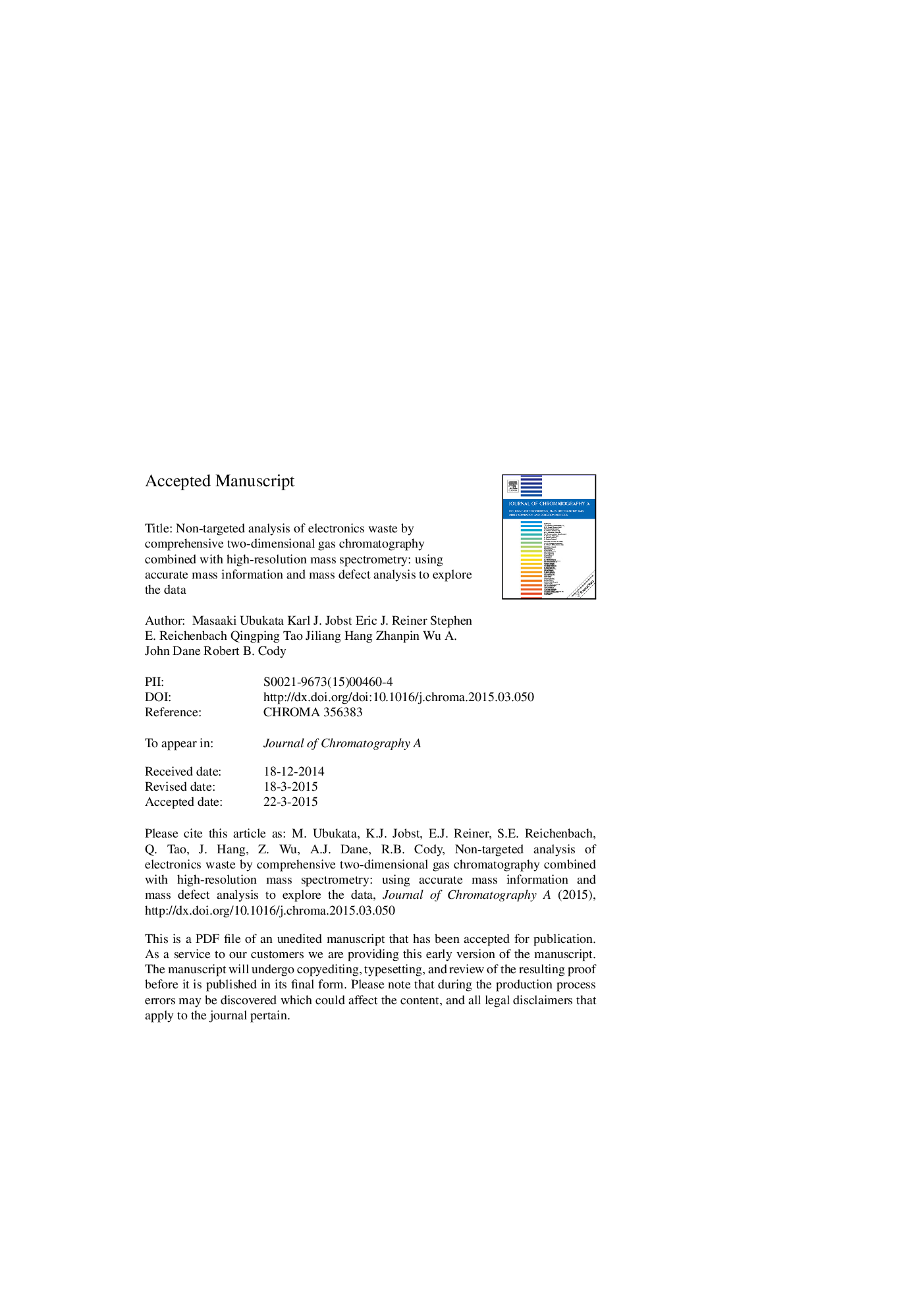| Article ID | Journal | Published Year | Pages | File Type |
|---|---|---|---|---|
| 7611864 | Journal of Chromatography A | 2015 | 24 Pages |
Abstract
This study reports on the analysis of dust obtained from an electronics recycling facility by using GCÃGC in combination with a new high-resolution time-of-flight (TOF) mass spectrometer. New software tools for (non-traditional) Kendrick mass defect analysis were developed in this research and greatly aided in the identification of compounds containing chlorine and bromine, elements that feature in most persistent organic pollutants (POPs). In essence, the mass defect plot serves as a visual aid from which halogenated compounds are recognizable on the basis of their mass defect and isotope patterns. Mass chromatograms were generated based on specific ions identified in the plots as well as region of the plot predominantly occupied by halogenated contaminants. Tentative identification was aided by database searches, complementary electron-capture negative ionization experiments and elemental composition determinations from the exact mass data. These included known and emerging flame retardants, such as polybrominated diphenyl ethers (PBDEs), hexabromobenzene, tetrabromo bisphenol A and tris (1-chloro-2-propyl) phosphate (TCPP), as well as other legacy contaminants such as polychlorinated biphenyls (PCBs) and polychlorinated terphenyls (PCTs).
Keywords
Related Topics
Physical Sciences and Engineering
Chemistry
Analytical Chemistry
Authors
Masaaki Ubukata, Karl J. Jobst, Eric J. Reiner, Stephen E. Reichenbach, Qingping Tao, Jiliang Hang, Zhanpin Wu, A. John Dane, Robert B. Cody,
